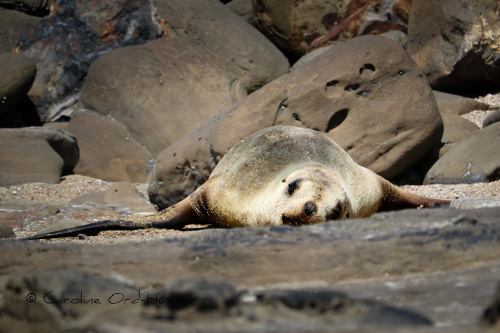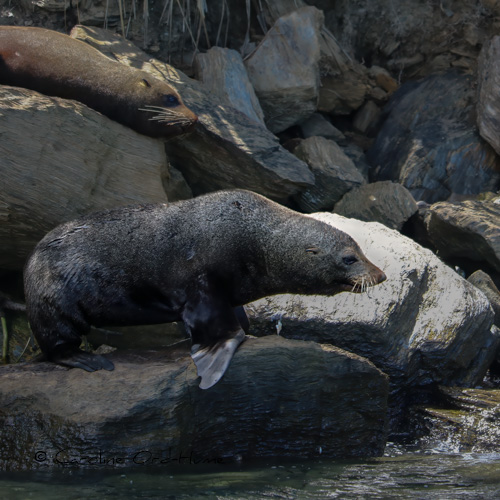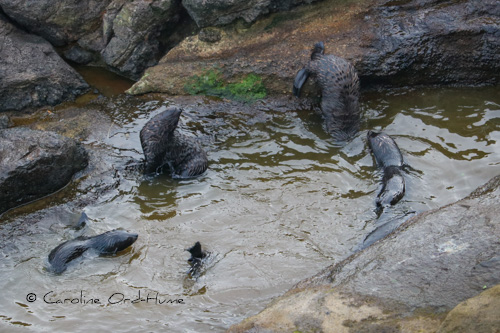- Home ›
- NZ Animals ›
- New Zealand Fur Seal
New Zealand Fur Seals / Kekeno: Guardians of the Southern Coast
New Zealand fur seals, scientifically known as Arctocephalus forsteri, are enchanting marine mammals that call the southern coasts of New Zealand their home. These animals are not only a fascinating part of New Zealand's natural heritage but also play a vital role in the region's unique ecosystem.

Also known as kekeno in Māori, New Zealand fur seals are medium-sized pinnipeds. They are characterized by their sleek, fur-covered bodies and have distinctive physical features that set them apart in the world of marine mammals.
Species
Arctocephalus forsteri is a species found mainly around New Zealand and southern Australia.
Scientific name: Arctocephalus forsteri
Other names: Kekeno (Māori language), Antipodean fur seal, Southern fur seal, Australasian fur seal, South Australian fur seal
Physical Characteristics of New Zealand Fur Seals
The physical characteristics of New Zealand fur seals are a testament to their adaptability to the coastal environment. They are known for their dense, waterproof fur, which helps them stay warm in cold waters.
These seals typically have brown or greyish-brown fur, with males being larger than females.
One of their unique features is their external ear flaps, which distinguish them from other seal species.
Related: New Zealand Wildlife - New Zealand Birds - Invasive Predators
Habitat and Distribution
New Zealand fur seals are primarily found along the rocky coastlines of New Zealand's South Island, as well as some smaller surrounding islands, along with parts of Australia.
Their distribution is not static; these fur seals undertake seasonal migrations to find suitable breeding and feeding grounds, often covering significant distances.
Although mostly found in the southern regions of New Zealand, they are also seen around the coast of the North Island.
Life Cycle and Reproduction
The life cycle of New Zealand fur seals is a captivating journey. Their mating behaviours are fascinating, with dominant males vying for the attention of females. After successful mating, females undergo a gestation period, ultimately giving birth to adorable pups. The mothers play a crucial role in nurturing and protecting their offspring during the early stages of life.
Diet and Feeding Habits of New Zealand Fur Seals
New Zealand fur seals are opportunistic predators. Their diet primarily consists of fish and squid, which they skilfully hunt underwater. Their hunting techniques are well-suited to their aquatic environment, and they display impressive agility and coordination when pursuing prey.
Behaviour and Social Structure
Within their colonies, New Zealand fur seals exhibit complex social hierarchies. They communicate with each other through a variety of vocalizations, and their daily activities offer insight into their behaviour. These seals are often seen basking in the sun on beaches or rocky outcrops, a sight that attracts wildlife enthusiasts.
Fur Seal Conservation Status in NZ
Throughout history, New Zealand fur seals have faced exploitation and numerous threats, including hunting for their fur and oil. Today, however, dedicated conservation efforts have led to their protection, and populations have started to rebound. These efforts include regulations to safeguard their habitats and prevent disturbance.
Related Content: New Zealand Wildlife - New Zealand Birds
Interactions with Humans
New Zealand fur seals hold cultural significance for the Māori people historically. However, human disturbances, such as habitat degradation and disturbance at breeding sites, have posed challenges in modern times. Responsible wildlife viewing guidelines are now in place to minimize human impacts and ensure the continued well-being of these remarkable creatures.

The Future
New Zealand fur seals are not only captivating but also crucial to the ecological balance of New Zealand's coastlines. Their remarkable physical adaptations, intriguing behaviours, and the ongoing efforts to protect them make them a subject of great interest and importance in the world of marine conservation.
As we continue to learn more about these seals, there is a deepened commitment to preserving their place in the natural world.
Emergency Contacts for Concerns About Seals in NZ
To report any concerns about seals or other marine animals such as if they are caught, injured, or killed contact:
- Department of Conservation Emergency Number 0800 362 468
- Ministry for Primary Industries 0800 008 333
To report nets being used in areas where netting is not permitted contact:
- Ministry for Primary Industries 0800 476 224
